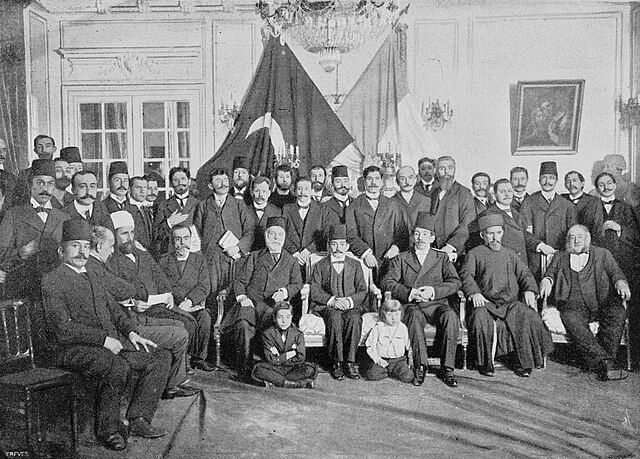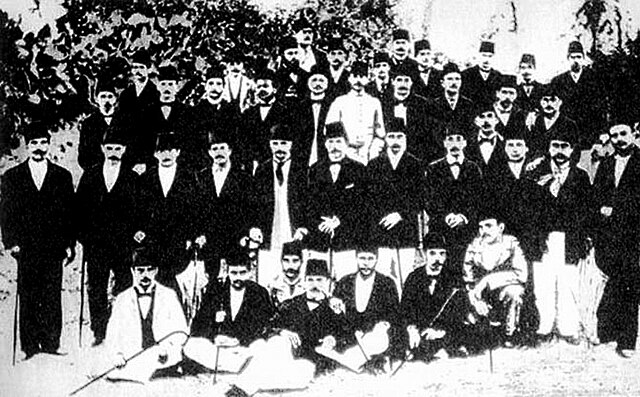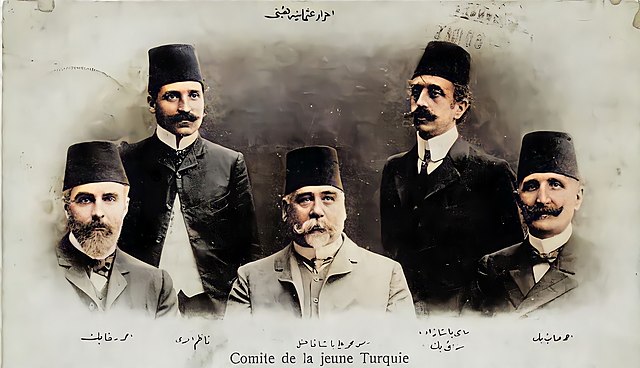Mehmed Talaat, commonly known as Talaat Pasha or Talat Pasha, was an Ottoman Young Turk activist, politician, and convicted war criminal who served as the de facto leader of the Ottoman Empire from 1913 to 1918. He was chairman of the Union and Progress Party, which operated a one-party dictatorship in the Empire; during World War I he became Grand Vizier. He has been called the architect of the Armenian genocide, and was responsible for other ethnic cleansings during his time as Minister of Interior Affairs.
Talaat Pasha
Early portrait
Mehmed Cavid, Talaat's friend and Unionist Minister of Finance, who was an opponent of his Turkification policies
Talaat with CUP leaders Halil Bey and Enver Pasha and Alfred Nossig, 1915
The Young Turks was a constitutionalist broad opposition movement in the late Ottoman Empire against Sultan Abdul Hamid II's absolutist regime. The most powerful organization of the movement, and the most conflated, was the Committee of Union and Progress (CUP), though its goals, strategies, and membership continuously morphed throughout Abdul Hamid's reign. By the 1890s, the Young Turks were mainly a loose and contentious network of intelligentsia exiled in Western Europe and Egypt that made a living by selling their newspapers to secret subscribers.
Young Turks who attended the congress held in Paris under the chairmanship of Prince Sabahattin between 4-9 February 1902
Before the Ottoman opposition congress, which was held in the house of Germain Antoin Lefevre-Pontalis a member of the Institut de France, on February 4, 1902, and was closed to the public, with the participation of 47 delegates the Young Turk Committee
Young Turks flyer with the slogan Long live the fatherland, long live the nation, long live liberty written in Ottoman Turkish and French
Young Turk (CUP) Committee in 1909








